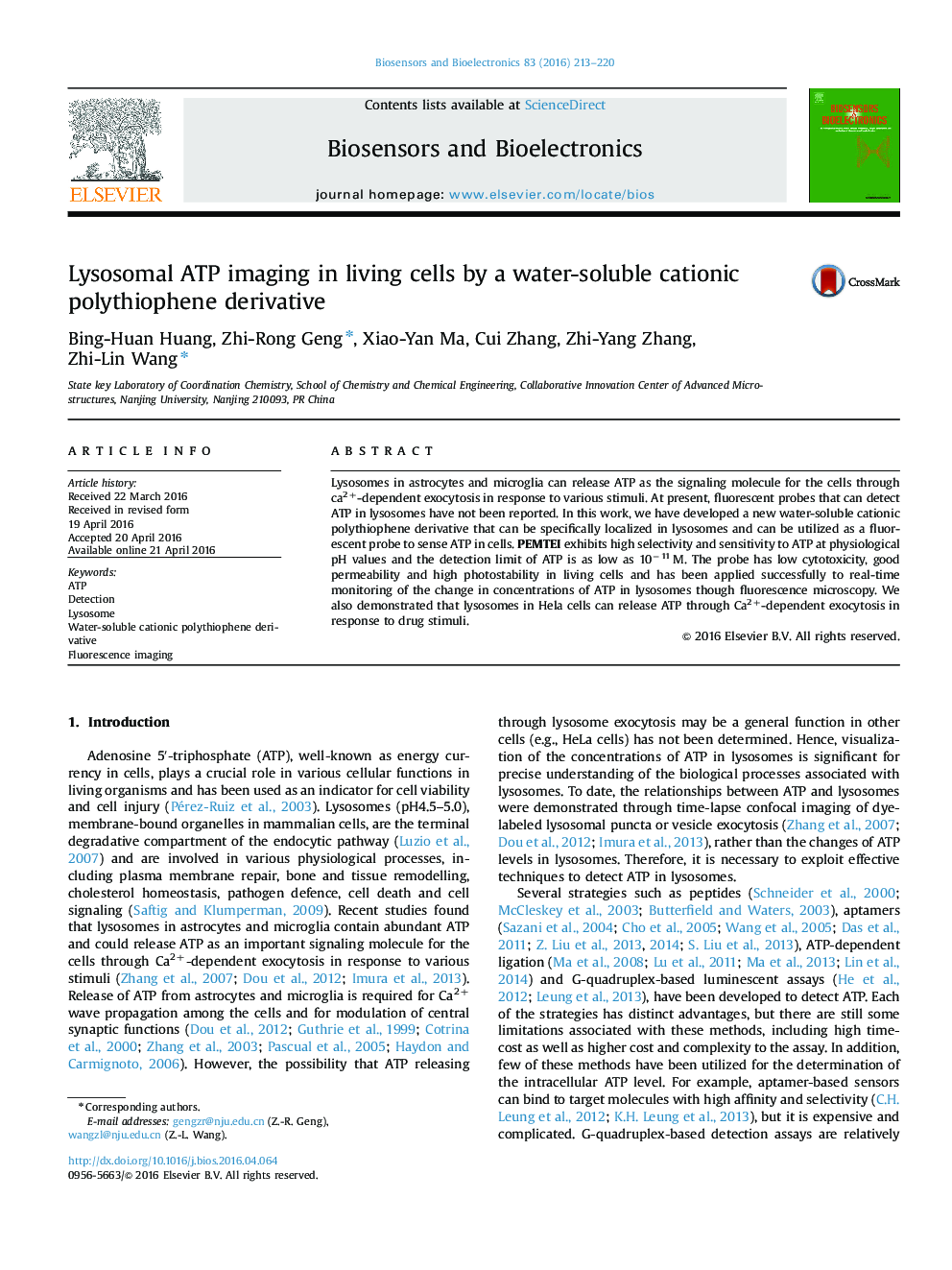| کد مقاله | کد نشریه | سال انتشار | مقاله انگلیسی | نسخه تمام متن |
|---|---|---|---|---|
| 866223 | 1470948 | 2016 | 8 صفحه PDF | دانلود رایگان |

• PEMTEI is the first fluorescent probe for the detection of ATP in lysosome.
• PEMTEI exhibits high selectivity and sensitivity to ATP in physiological conditions.
• PEMTEI has low cytotoxicity, good permeability and high photostability in cells.
• Lysosomes in HeLa cells can release ATP through Ca2+-dependent exocytosis.
Lysosomes in astrocytes and microglia can release ATP as the signaling molecule for the cells through ca2+-dependent exocytosis in response to various stimuli. At present, fluorescent probes that can detect ATP in lysosomes have not been reported. In this work, we have developed a new water-soluble cationic polythiophene derivative that can be specifically localized in lysosomes and can be utilized as a fluorescent probe to sense ATP in cells. PEMTEI exhibits high selectivity and sensitivity to ATP at physiological pH values and the detection limit of ATP is as low as 10−11 M. The probe has low cytotoxicity, good permeability and high photostability in living cells and has been applied successfully to real-time monitoring of the change in concentrations of ATP in lysosomes though fluorescence microscopy. We also demonstrated that lysosomes in Hela cells can release ATP through Ca2+-dependent exocytosis in response to drug stimuli.
Journal: Biosensors and Bioelectronics - Volume 83, 15 September 2016, Pages 213–220